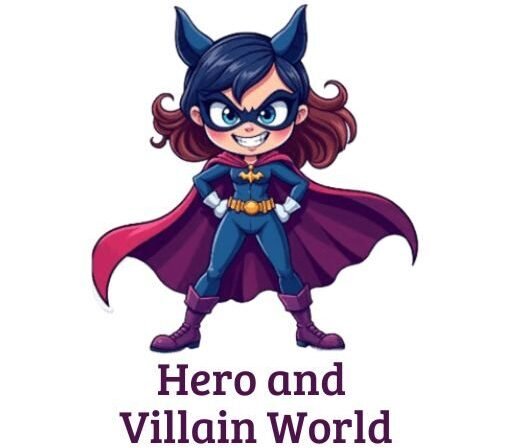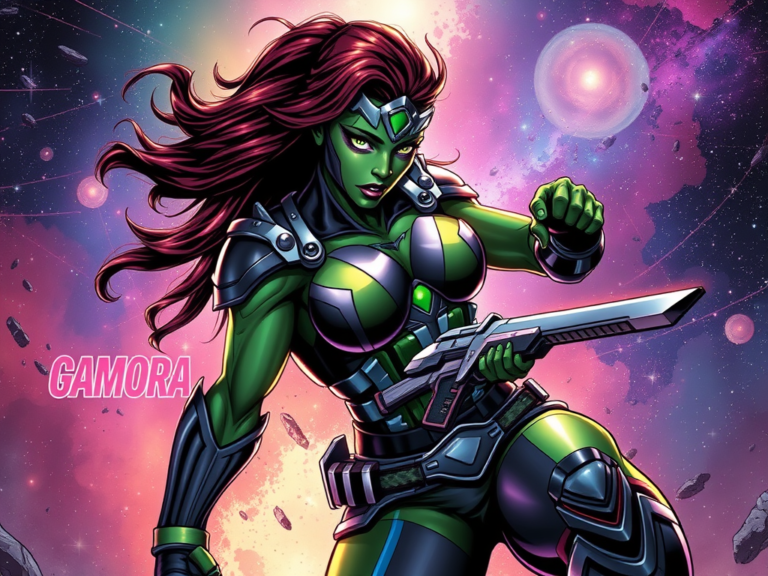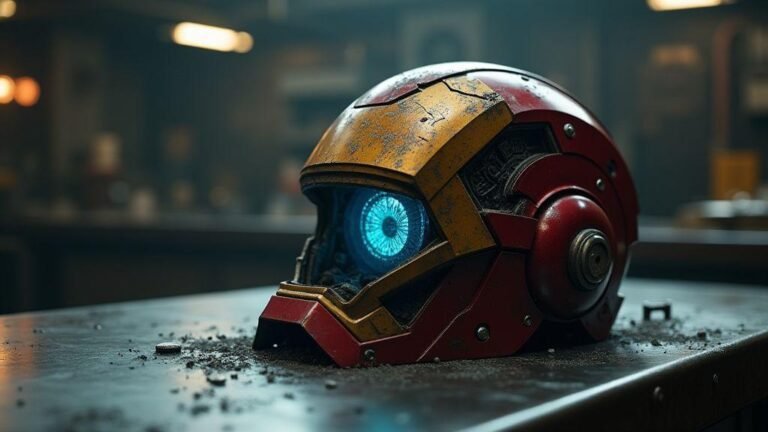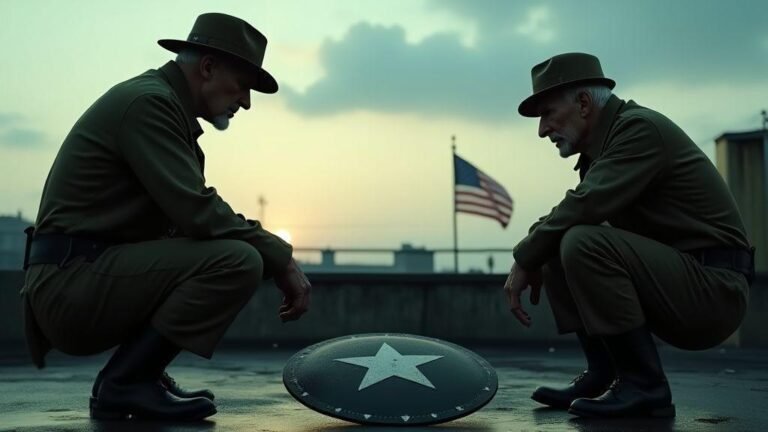Who Is Luke Cage? Origin, Powers, and Story
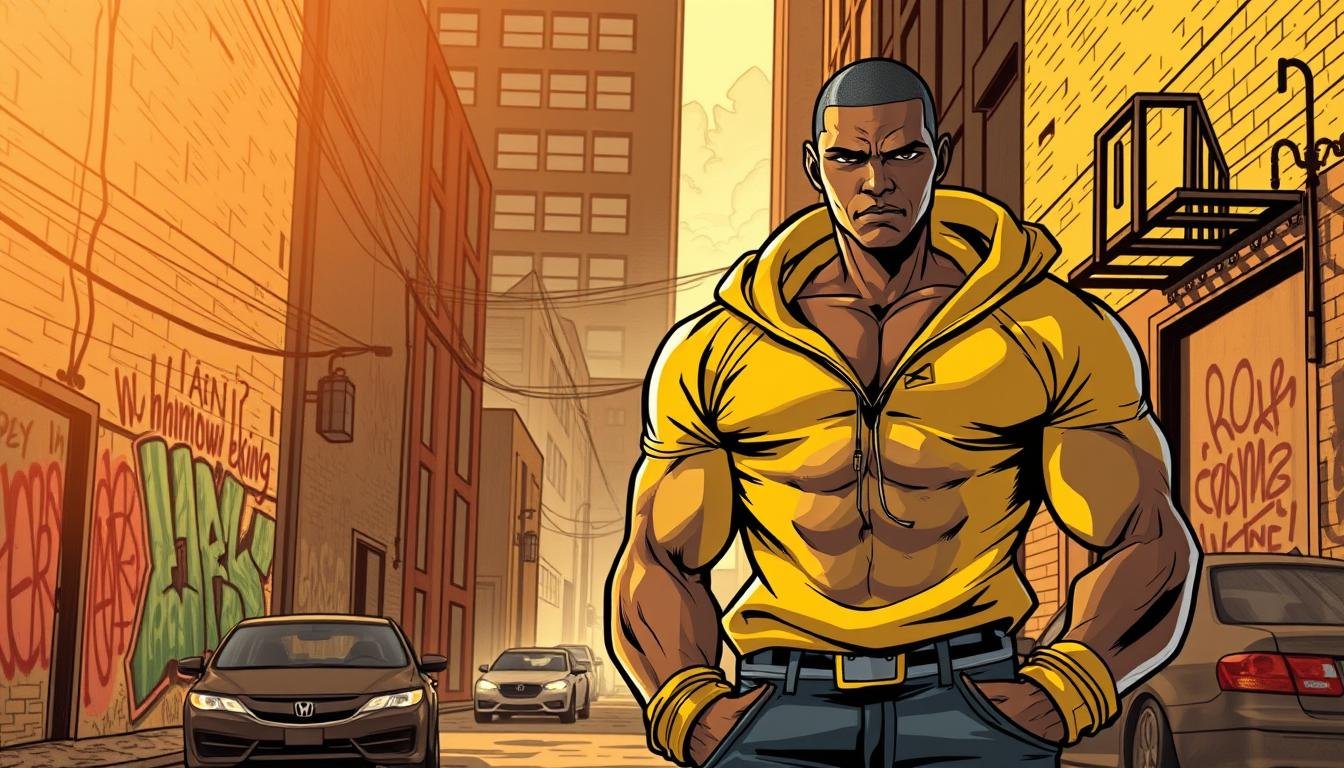
Who Is Luke Cage? Have you ever wondered what it takes to become a hero in a world full of challenges?
Meet Carl Lucas, better known as Luke Cage, a character who embodies resilience and strength. Born and raised in the heart of New York, his journey from a troubled past to becoming a symbol of hope is nothing short of inspiring.
Luke Cage is Marvel’s groundbreaking first Black superhero lead. His story began in the 1970s, addressing themes of race, class, and police brutality. From his roots in Harlem to his evolution into a family-focused narrative, his character has grown significantly over the years.
With superhuman strength and unbreakable skin, Luke Cage has become a formidable protector.
His Hero for Hire business model and his marriage to Jessica Jones add layers to his complex character. Whether he’s fighting street-level crime or teaming up with the Avengers, his impact is undeniable.
Even today, Luke Cage remains a relevant figure, connecting his 1970s origins to modern social justice themes. His story continues to inspire, proving that true heroism knows no bounds.
Introduction to Luke Cage
What makes a man rise from hardship to become a symbol of hope? This is the story of Marvel’s groundbreaking hero, a figure who embodies resilience and strength. Born in the heart of Harlem, his journey from a troubled past to a beacon of power is both inspiring and relatable.
Originally introduced in the 1970s Blaxploitation era, this character has evolved significantly. From a jive-talking street hero to a modern leader, his transformation reflects the changing times.
Today, he stands as the first Black superhero to headline a Marvel series, a milestone in the United States comic industry.
His role as Harlem’s defender is central to his identity. Whether fighting street-level crime or leading as NYC’s mayor, his commitment to his community is unwavering. His origin story, rooted in wrongful imprisonment, ties into real-world issues of justice and systemic inequality.
In modern comics, he’s portrayed as a family man, married to Jessica Jones and raising their child. This adds depth to his character, showing a softer side to the man with unbreakable skin. His leadership in the Gang War storyline further cements his status as a protector and visionary.
- From a 1970s street hero to a modern leader.
- First Black superhero to headline a Marvel series.
- Married to Jessica Jones, balancing heroism and family life.
- Current role as NYC mayor, fighting for justice.
Both the comics and Netflix series highlight his cultural importance. While the comics focus on his leadership, the Netflix adaptation delves into his personal struggles and Harlem’s social issues. Together, they paint a comprehensive picture of a hero who continues to inspire.
His relationships with allies like Iron Fist and Misty Knight showcase his collaborative spirit. These partnerships highlight his ability to unite others in the fight for justice. Through it all, he remains a symbol of Black empowerment and resilience.
Luke Cage burst onto the comics scene as a new kind of hero for a new era, a hero for hire. His exploits were set against 1970s New York’s grit and the plight of the city’s people, all while incorporating larger-than-life villains and even the occasional Avenger. As the first African-American super hero to headline in his own series, Luke Cage’s adventures were as historic as they were exciting. Now, his complete solo series is collected in one massive Omnibus edition. Experience the first appearance of Cottonmouth, Cage’s evolving relationship with Claire Temple and the debut of Bill Foster as Giant-Man. Uncover the secrets of Security City and witness Cage battle for the title “Power Man.” Collecting HERO FOR HIRE #1-16, and POWER MAN #17-47 and ANNUAL #1.
The Creators Behind Luke Cage
Who were the minds behind Marvel’s groundbreaking character? The creation of this iconic hero was a collaborative effort by Marvel’s “bullpen” system.
Archie Goodwin, George Tuska, Roy Thomas, and John Romita Sr. brought him to life in 1972. Their teamwork ensured a character that resonated with audiences.
Inspired by the Blaxploitation films of the era, such as Shaft and Super Fly, the character’s design and story reflected the cultural zeitgeist.
Billy Graham, the first Black Marvel artist consultant, played a crucial role in ensuring authentic representation. His contributions helped shape a character that felt real and relatable.
The Hero for Hire business model was a unique concept. Stan Lee’s idea of a superhero who charged for his services added a fresh twist to the genre. This approach not only made the character stand out but also highlighted the economic realities of the time.
The 1970s comic industry was deeply influenced by the Black Power movement. This ethos of empowerment and resilience became central to the character’s identity. His story addressed themes of justice and systemic inequality, making him a symbol of hope for many.
In the 2000s, Brian Michael Bendis modernized the character, bringing him into the 21st century while staying true to his roots. The Netflix adaptation by Cheo Hodari Coker further cemented his relevance, blending modern storytelling with the character’s rich history.
“The character’s creation was a reflection of the times, blending cultural influences with innovative storytelling.”
Here’s a quick look at the key creators and their contributions:
| Creator | Role |
|---|---|
| Archie Goodwin | Writer |
| George Tuska | Artist |
| Roy Thomas | Editor |
| John Romita Sr. | Designer |
| Billy Graham | Artist Consultant |
From the 1970s to today, the character’s journey has been shaped by talented creators who understood the importance of representation and storytelling. Their work continues to inspire, proving that great characters are timeless.
The Origin of Luke Cage
Every hero has a beginning, and for Carl Lucas, it was a journey through hardship and injustice. Growing up in Harlem, he was no stranger to the challenges of street life.
Alongside his childhood friend Willis Stryker, he navigated the complexities of gang culture. But betrayal would soon change his life forever.
Stryker, driven by jealousy, framed Lucas for drug possession by planting heroin in his apartment. The corrupt justice system swiftly sentenced him to 20 years in Seagate Prison.
This marked the start of a brutal chapter in Lucas’s life, where he faced abuse from racist prison guards like Billy Bob Rackham.
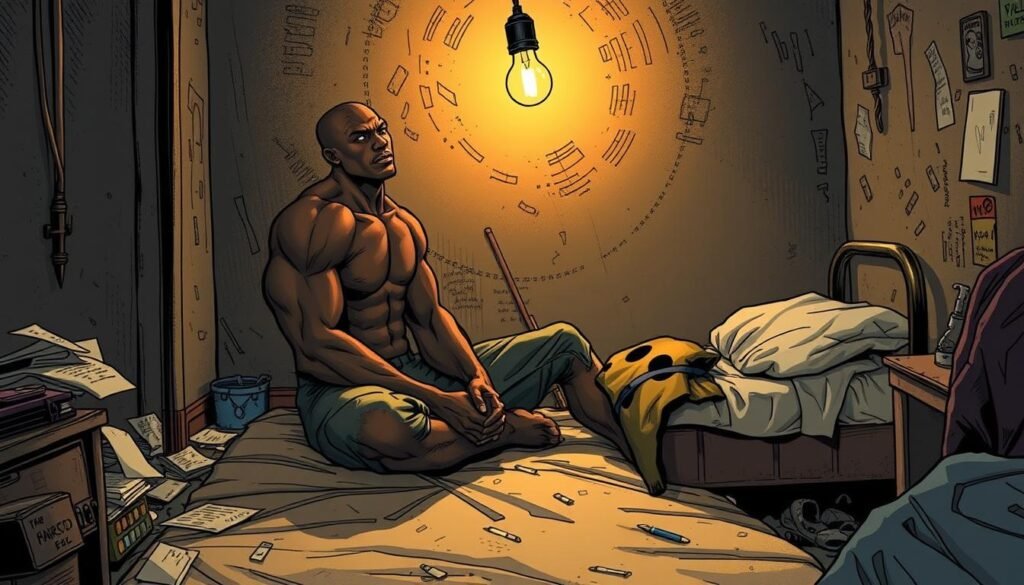
From Carl Lucas to Hero for Hire
While in Seagate Prison, Lucas became the subject of a secret experiment conducted by Dr. Noah Burstein.
The goal was to regenerate damaged cells, but a sabotage by Rackham altered the process. Instead, Lucas gained superhuman strength and unbreakable skin, powers that would define his future.
Using his newfound abilities, Lucas orchestrated a daring prison break. After escaping, he adopted the name Luke Cage and began his journey as the Hero for Hire. His first job as a super-powered private detective marked the start of his mission to protect the innocent.
The Experiment That Changed Everything
Burstein’s experiment was a turning point in Lucas’s life. Submerged in an electrical field with acetovaxidol, his body underwent a radical transformation. The sabotage by Rackham not only gave him powers but also highlighted the corruption within the prison system.
This origin story reflects broader societal issues, such as systemic racism and mass incarceration. Lucas’s wrongful imprisonment and subsequent transformation into a hero resonate with real-world struggles, making his journey both inspiring and relatable.
“The experiment was supposed to heal, but it gave me something far greater—the power to fight back.”
After his escape, Lucas legally changed his name to Luke Cage, symbolizing his rebirth. The psychological scars of his wrongful imprisonment shaped his commitment to justice, proving that even in the darkest times, hope can prevail.
Luke Cage’s First Appearance
The year 1972 marked the debut of a hero who would redefine comic book storytelling. In June of that year, Marvel Comics introduced Luke Cage in Hero for Hire #1. This groundbreaking issue not only launched a new character but also set a milestone in comic diversity.
Created by writer Archie Goodwin and artist George Tuska, the series showcased a unique concept: a superhero who charged for his services.
With an initial fee of $200, Cage’s Hero for Hire business model reflected the economic realities of the time. This approach made him stand out in the comic world.
The dialogue style in the early issues was heavily influenced by 1970s street slang and the Blaxploitation era. This gave the character an authentic voice, resonating with readers who saw their own struggles reflected in his story.
The series was later renamed Power Man in 1974 and merged with Iron Fist in 1978, creating a dynamic duo that captivated audiences.
Cage’s first appearance also featured his first team-up with Spider-Man in The Amazing Spider-Man #123.
This crossover helped boost his popularity, though the series faced sales challenges initially. The partnership with Iron Fist was a strategic move to revitalize the character and expand his reach.
“The creation of Luke Cage was a reflection of the times, blending cultural influences with innovative storytelling.”
Today, the debut story of Hero for Hire #1 is celebrated as a turning point in comic history. It paved the way for greater representation and diversity in the industry. From his roots in 1972 to his modern interpretations, Luke Cage remains a symbol of resilience and justice.
How Luke Cage Got His Powers
What happens when science meets sabotage in the quest for power? For Carl Lucas, it was a life-changing event at Seagate Prison.
Dr. Noah Burstein’s Electro-Biochemical System experiment aimed to replicate the Super-Soldier serum. Instead, it gave Lucas superhuman strength and unbreakable skin.
The experiment involved exposing Lucas to an organic chemical compound under an electrical field.
This was designed to stimulate cell regeneration. However, Captain Rackham’s sabotage caused the process to overheat. The unexpected reaction enhanced the effects, transforming Lucas into a superhuman.
In the comics, the experiment was tied to the Super-Soldier program. The Netflix series introduced a more grounded, scientifically plausible explanation.
Both versions subvert the typical “radiation accident” trope. Instead, they present a deliberate, chemically induced transformation.
Here’s a quick comparison of the comic and Netflix series power origins:
| Aspect | Comic Origin | Netflix Series Origin |
|---|---|---|
| Experiment Goal | Recreate Super-Soldier serum | Cell regeneration and strength enhancement |
| Sabotage | Yes, by Rackham | Yes, by Rackham |
| Power Manifestation | Immediate and permanent | Immediate and permanent |
| Scientific Plausibility | Less grounded | More grounded |
Post-experiment, Lucas discovered secondary powers like accelerated healing. These abilities made him a formidable protector. His transformation was not just physical but also symbolic. It represented resilience in the face of systemic injustice.
Dr. Burstein’s experiment was a turning point. It showed how science, when tampered with, can create extraordinary outcomes. Lucas’s journey from prisoner to hero is a testament to the power of perseverance and the unexpected consequences of human ambition.
Luke Cage’s Powers and Abilities
What defines a hero’s strength beyond their physical abilities? For this iconic character, it’s a combination of superhuman strength, unbreakable skin, and a regenerative healing factor. These powers make him a formidable protector, but they also come with unique limitations.
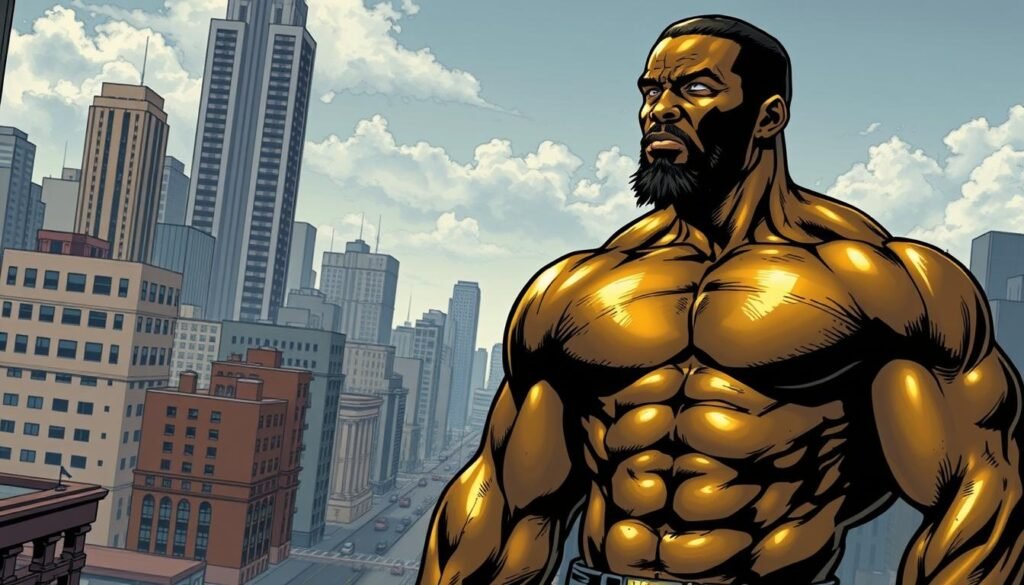
Superhuman Strength and Durability
One of his most defining traits is his ability to lift up to 25 tons. This superhuman strength allows him to overpower most foes, from street-level criminals to superpowered adversaries. His durability complements this, enabling him to withstand extreme physical stress without injury.
During major events like Civil War, his strength levels have fluctuated, showcasing his adaptability. Despite this, he remains one of the strongest street-level heroes in the Marvel Universe.
Unbreakable Skin: Myth vs. Reality
His unbreakable skin is often misunderstood. While it can resist .30cal rounds and most physical attacks, it’s not entirely invulnerable. Piercing attacks and magic can penetrate his defenses, revealing a key vulnerability.
In the Netflix series, his iconic “bulletproof hoodie” became a symbol of his resilience. However, even this aesthetic choice highlighted the limits of his nigh-invulnerability.
Regenerative Healing Factor
His regenerative healing allows him to recover from minor injuries in hours. While not as advanced as Wolverine’s regeneration, it’s still a crucial asset in prolonged battles. This healing factor also enhances his pain tolerance, making him a relentless fighter.
However, he’s not immune to suffocation or chemical attacks. These weaknesses add depth to his character, showing that even the strongest heroes have limits.
From facing Thanos to battling Hulk variants, his powers have been tested against some of the strongest foes. Yet, his resilience and determination continue to define him as a true hero.
Luke Cage’s Weaknesses
Even the strongest heroes have vulnerabilities that shape their journey. While his unbreakable skin and superhuman strength make him a formidable protector, he’s not invincible. Understanding his weaknesses adds depth to his character and highlights the challenges he faces.
One of his most notable vulnerabilities is his susceptibility to certain materials. For example, adamantium and vibranium can penetrate his skin. In the MCU, the Judas Bullet, made of vibranium, caused significant injury, proving that even his enhanced durability has limits.
Chemical and neurotoxin attacks are another threat. Acid and high-energy radiation can overwhelm his regenerative healing, making him vulnerable in specific scenarios. Environmental extremes, like suffocation in confined spaces, can also bring him to the end of his resilience.
Psychological tactics are often used against him. His strict code of honor and deep love for his family make him a target for manipulation. Enemies exploit these emotional ties to weaken his resolve, showing that even the strongest heroes have emotional weaknesses.
His past as an ex-convict adds another layer of vulnerability. The law often views him with suspicion, complicating his efforts to protect his community. This legal status challenges his ability to operate freely, despite his good intentions.
Repeated trauma has also taken a toll on his health. Diagnosed with chronic traumatic encephalopathy (CTE), he faces long-term consequences from his battles. This diagnosis highlights the physical and mental cost of his heroic life.
In comparison to other durable heroes, his weaknesses are unique. While he can withstand bullets and blunt force, piercing attacks and magic remain his Achilles’ heel. These vulnerabilities make him a more relatable and human character, proving that true strength lies in overcoming challenges.
Luke Cage’s Key Allies
Behind every great hero is a team of allies who make their journey possible. For this iconic character, his relationships with Iron Fist, Jessica Jones, Misty Knight, and Claire Temple have been pivotal.
These allies not only support him in battle but also shape his personal and professional life.
Iron Fist: The Dynamic Duo
One of his most iconic partnerships is with Iron Fist, also known as Danny Rand. Together, they co-founded Heroes for Hire, a unique business model where they offered their services for a fee.
This buddy-cop dynamic brought humor and action to their adventures, making them a fan-favorite duo.
Their friendship goes beyond business. They’ve faced countless threats together, from street-level crime to supernatural enemies. Their bond is built on mutual respect and trust, proving that even in the Marvel Universe, teamwork makes the dream work.
Jessica Jones: Love and Partnership
His relationship with Jessica Jones is one of the most significant in his life. Married in New Avengers Annual #1 (2006), their interracial marriage broke barriers in the comic world. Together, they navigate the challenges of parenthood with their daughter, Danielle Cage.
Jessica’s no-nonsense attitude complements his grounded nature. Their partnership is a blend of love, respect, and shared trauma, making them one of Marvel’s most relatable couples.
- Misty Knight: As a police liaison, Misty provides crucial support in his fight for justice.
- Claire Temple: A skilled nurse, Claire offers medical assistance and emotional guidance.
- Avengers Affiliations: He’s been a member of the New, Mighty, and Defenders teams.
- Thunderbolts Leadership: He led the Thunderbolts, showcasing his leadership skills.
- Mayoral Partnership: As NYC’s mayor, he collaborated with Daredevil to protect the city.
“True strength lies in the bonds we build with others.”
From the streets of Harlem to the halls of the Avengers, his allies have been instrumental in his journey. Whether it’s fighting crime or raising a family, these relationships highlight the importance of community and collaboration.
For more details on his allies, check out this comprehensive list of characters.
Luke Cage’s Greatest Rivals
Every hero’s journey is shaped by the challenges they face, and for this iconic character, his greatest battles come from his rivals. From childhood betrayals to criminal masterminds, these adversaries have tested his strength and resolve.
One of his most personal conflicts is with Willis Stryker, also known as Diamondback. Once a childhood friend, Stryker framed him for drug possession, leading to his wrongful imprisonment. This betrayal not only fueled his transformation but also set the stage for their lifelong rivalry.
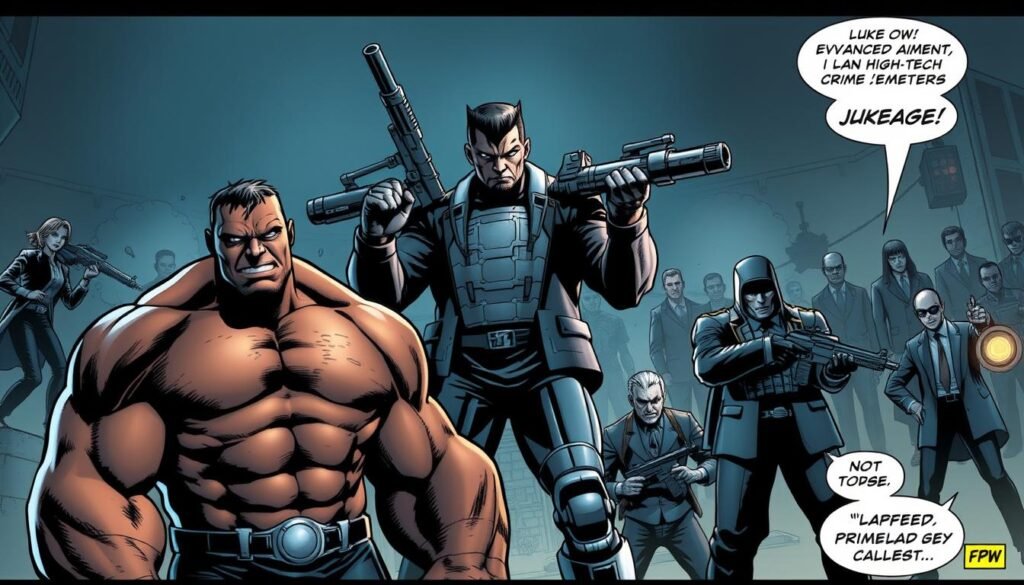
In the Netflix series, Cottonmouth emerges as a formidable foe. As a drug lord controlling Harlem’s heroin trade, he represents the systemic corruption Cage fights against. His reimagined role in the series adds depth to their conflict, showcasing the struggle for Harlem’s soul.
Another key antagonist is Bushmaster, a Jamaican crime boss with ties to the Maggia family. Their clashes highlight the global reach of organized crime and Cage’s determination to protect his community, even from international threats.
Shades, an ex-con with a knack for psychological manipulation, adds another layer of complexity. His tactics often exploit Cage’s vulnerabilities, making him a dangerous and unpredictable enemy.
“A hero is only as strong as the challenges they overcome.”
From the Maggia crime family to corrupt police units, Cage’s battles extend beyond individual villains. His rivalry with Doctor Doom over an unpaid debt and his political clashes with Kingpin as NYC’s mayor further highlight the diverse threats he faces.
Whether in comics or on screen, these rivals have shaped his journey, proving that true heroism lies in overcoming adversity. Their stories add depth to his character, making his victories all the more impactful.
Luke Cage in Comics: A Legacy Unfolded
The journey of this iconic character spans decades, reflecting the evolution of comic storytelling. From his gritty beginnings in the 1970s to his modern-day leadership, his story is a testament to resilience and representation.
1970s: The Birth of a Hero
Introduced in 1972, this character emerged during the Blaxploitation era, a time when Marvel Comics sought to address social issues.
His original run (1972-1986) showcased themes of race, class, and justice, making him a groundbreaking figure. The Hero for Hire series was a bold move, blending street-level crime with superhero action.
His dialogue, filled with 1970s slang, gave him an authentic voice. This resonated with readers who saw their struggles reflected in his story. The series later merged with Iron Fist, creating a dynamic duo that captivated audiences.
1990s: A Period of Neglect
The 1990s saw a decline in focus on this character. However, the Second Chances series, written by Marc McLaurin, attempted to revive his story. This series introduced new villains like Hardcore and Kickback, while exploring themes of gang violence and law enforcement abuse.
Despite its flaws, Second Chances was heartfelt, delving into his emotional journey. It highlighted his internal conflicts and struggles, adding depth to his character.
2000s Revival: Bendis’ Reinvention
The 2000s marked a turning point, thanks to Brian Michael Bendis. In New Avengers, Bendis reimagined this hero as a modern leader. His role in Civil War showcased his resistance to the Superhuman Registration Act, cementing his status as a protector of individual freedoms.
Bendis also explored his personal life, including his marriage to Jessica Jones and their daughter, Danielle. This added a new layer to his character, balancing heroism with family life.
Luke Cage defends the streets of New York City, and even takes the fight to the outer boroughs, in this Epic Collection completing his solo adventures! He’ll face menaces as tough as Moses Magnum, as bizarre as the Mace…and as infuriating as the Gem Theater’s always-unpredictable vending machine! It’s all set against the gritty streets of 1970s Times Square, a location as colorful as anything Marvel’s minds have ever conjured up. Cage will also face an all-new and amped-up Chemistro; the Spear, who seeks to settle a score with the man who made Luke Cage bulletproof; and an adversary as unstoppable as death itself: the IRS! Also featuring the debut of Bill Foster as Giant-Man – and the one and only Piranha Jones! Collecting POWER MAN #24-47 and ANNUAL #1.
Modern Heroism: Mayor Cage and Beyond
In recent years, this character has taken on a new role as NYC’s mayor. The 2023 Gang War storyline highlights his leadership in the face of citywide chaos. His ability to unite allies and fight for justice continues to inspire.
From the streets of Harlem to the halls of power, his journey is a testament to the power of perseverance. His story remains relevant, addressing modern social issues while staying true to his roots.
Essential Graphic Novels
To fully appreciate his legacy, here are some must-read graphic novels:
| Title | Year | Key Themes |
|---|---|---|
| Hero for Hire #1 | 1972 | Street-level crime, social justice |
| New Avengers: Breakout | 2005 | Team dynamics, modern heroism |
| Civil War: Front Line | 2006 | Resistance, individual freedoms |
| Power Man and Iron Fist | 2016 | Friendship, crime-fighting |
| Gang War | 2023 | Leadership, citywide conflict |
“True heroism lies in the ability to adapt and inspire, no matter the era.”
From his Blaxploitation roots to his modern-day leadership, this character’s legacy is a testament to the power of storytelling and representation. His journey continues to inspire, proving that heroes evolve with the times.
Luke Cage in Other Media
How does a hero transition from comics to the screen while maintaining their essence? The journey of this iconic character from the pages of Marvel Comics to live-action adaptations has been nothing short of remarkable.
From Netflix’s gritty portrayal to potential MCU appearances, his story continues to resonate with audiences.
Netflix’s Luke Cage Series
Netflix’s Luke Cage series, which ran from 2016 to 2018, brought the character to life in a way that honored his comic roots while addressing modern issues.
Starring Mike Colter in the titular role, the show captured the essence of Harlem, making the neighborhood a central character in its own right. The series’ authentic portrayal of the community, combined with its exploration of systemic issues, made it a standout.
The show’s score, composed by Adrian Younge and Ali Shaheed Muhammad, added a unique layer of authenticity. It blended hip-hop, soul, and jazz, reflecting the cultural richness of Harlem. The series also introduced the iconic catchphrase Sweet Christmas, which became a fan favorite.
Despite its critical acclaim, the series was canceled after two seasons. However, it left a lasting impact, particularly in its portrayal of a bulletproof black man as a symbol of resilience.
The show also teased the possibility of a live-action Heroes for Hire team-up, leaving fans hopeful for future collaborations.
MCU Appearances and Beyond
With the integration of Marvel’s Netflix series into the MCU, there’s renewed hope for Mike Colter’s return. Projects like Secret Invasion and Echo could provide the perfect platform for his comeback.
These series explore street-level narratives, making them ideal for reintroducing this beloved character.
Additionally, Daredevil: Born Again might set the stage for a new Defenders lineup, potentially bringing him back into the fold. His alignment with themes of super-soldier serum could also make him a fit for Captain America: New World Order.
For now, fans can revisit his journey in Netflix’s Luke Cage series, which remains a testament to the character’s enduring legacy. Whether on the small screen or in the MCU, his story continues to inspire and captivate audiences worldwide.
Cultural Impact of Luke Cage
What does it mean to redefine heroism in a world that often overlooks its own heroes? This iconic character’s journey from the streets of Harlem to the forefront of Marvel’s universe has left an indelible mark on pop culture.
His story is not just about superhuman strength but also about breaking barriers and inspiring change.
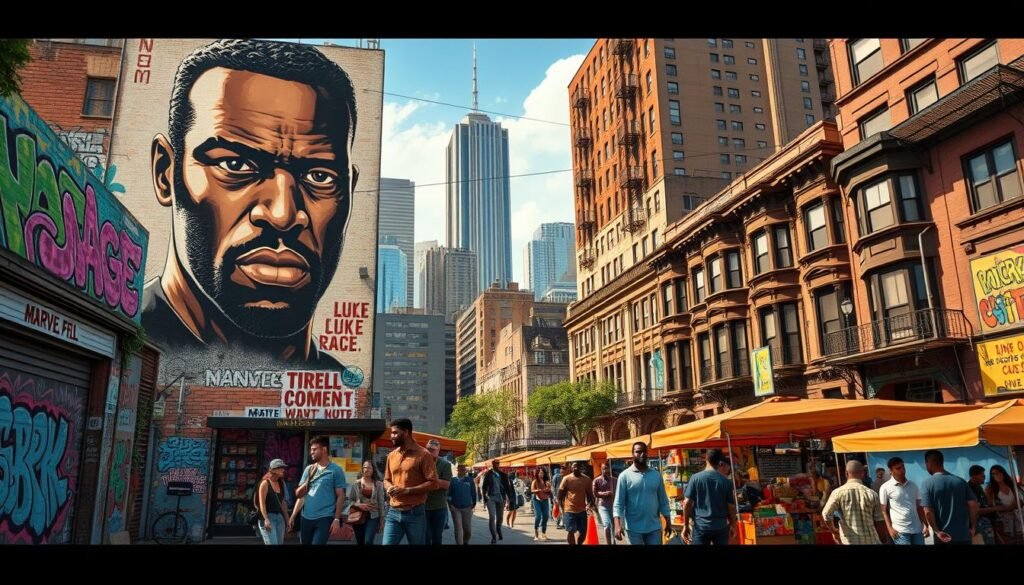
As Marvel’s first Black lead, he shattered stereotypes and paved the way for greater representation in comics. Introduced during the Blaxploitation era, his early stories reflected the struggles and triumphs of Black Americans.
Over time, he evolved into a symbol of modern heroism, addressing issues like police brutality and systemic inequality.
Breaking Barriers as Marvel’s First Black Lead
When he debuted in 1972, he was a groundbreaking figure in the comic industry. His creation was a response to the lack of Black superheroes in mainstream media.
His stories tackled themes of race, class, and justice, resonating with readers who saw their own experiences reflected in his journey.
His influence extended beyond comics, inspiring characters like Black Panther. The success of Black Panther’s MCU debut can be traced back to the foundation laid by this hero. His legacy continues to inspire new generations of creators and fans.
From Blaxploitation to Modern Heroism
His early years were rooted in the Blaxploitation genre, with stories filled with street slang and gritty realism.
While these elements were a product of their time, they also highlighted the challenges faced by Black communities. As the character evolved, so did his narrative, shifting from a street-level hero to a leader in the fight for social justice.
In recent years, his story has been used as a teaching tool in ethnic studies, exploring themes like the prison industrial complex and systemic racism. His journey from wrongful imprisonment to heroism mirrors real-world struggles, making his story both relevant and impactful.
From his iconic tiara and chain belt to his integration of Hip Hop culture, his influence extends beyond comics. His portrayal in the Netflix series brought these elements to life, showcasing the rich cultural tapestry of Harlem.
The show’s soundtrack, blending jazz and funk, added another layer of authenticity.
“True heroism lies in the ability to inspire change, no matter the odds.”
His story is a testament to the power of representation and the enduring impact of a hero who reflects the struggles and triumphs of his community. Whether in comics, TV, or academic discussions, his legacy continues to inspire and challenge the status quo.
Luke Cage’s Evolution Over the Years
Over the years, this iconic hero has transformed from a street-level protector to a city leader, reflecting his growth and adaptability. From his gritty beginnings in the 1970s to his modern-day leadership, his journey is a testament to resilience and representation.
In the 1970s, he debuted as a Hero for Hire, tackling crime in Harlem with a unique business model.
His early stories were rooted in the struggles of urban life, resonating with readers who saw their own challenges reflected in his journey. By the 2000s, he had evolved into a leader, joining the Avengers and mentoring younger heroes.
Parenthood added a new dimension to his character. Married to Jessica Jones and raising their daughter Danielle, he balanced crime-fighting with family responsibilities. This shift from a solo act to a family man showcased his depth and maturity.
His leadership style also evolved. From leading Heroes for Hire to reforming the Thunderbolts, he demonstrated a knack for uniting others in the fight for justice. His role as NYC’s mayor in the 2020s highlighted his commitment to protecting his city.
Here’s a quick look at his evolution across the decades:
| Decade | Role | Key Milestones |
|---|---|---|
| 1970s | Hero for Hire | Street-level crime, Harlem protector |
| 2000s | Avengers Leader | Mentorship, team leadership |
| 2020s | NYC Mayor | Citywide leadership, family focus |
His legacy continues through his daughter Danielle, who embodies his values and power. From the streets of Harlem to the halls of power, his story remains a beacon of hope and resilience.
“True heroism lies in the ability to adapt and inspire, no matter the era.”
Luke Cage’s Most Memorable Storylines
What makes a hero’s story unforgettable? It’s the moments that define their journey, the battles they fight, and the legacy they leave behind. For this iconic character, his most memorable storylines have shaped his identity as a protector, leader, and symbol of resilience.
His debut in Hero for Hire #1 set the stage for his rise. Wrongfully imprisoned and subjected to a life-altering experiment, he emerged with superhuman strength and unbreakable skin. This origin story not only introduced him as a hero but also highlighted themes of justice and redemption.
In the New Avengers era, he became a key figure in the Marvel Universe. His resistance to the Superhero Registration Act during Civil War showcased his commitment to individual freedoms. This arc cemented his role as a leader who stands firm in his beliefs, even against overwhelming odds.
His partnership with Iron Fist in Power Man and Iron Fist brought humor and action to his adventures. Together, they formed Heroes for Hire, a unique team that blended street-level crime-fighting with a business model. Their dynamic remains a fan favorite.
More recently, his role as NYC’s mayor in Gang War has added a new layer to his story. Facing citywide chaos, he’s proven that leadership isn’t just about strength but also about uniting others for a common cause. This storyline reflects his evolution from a solo hero to a community leader.
“True heroism lies in the ability to inspire change, no matter the odds.”
From his early days as a Hero for Hire to his current battles in Gang War, his storylines continue to resonate. Each arc adds depth to his character, making him a timeless symbol of hope and resilience.
Where Is Luke Cage Now?
What does it take to lead a city while fighting crime on the streets? Right now, this iconic hero is serving as the mayor of New York City, a role he earned after defeating Wilson Fisk, also known as Kingpin, in a heated election.
His journey from vigilante to political leader is a testament to his resilience and commitment to justice.
As mayor, he’s balancing the demands of politics with his vigilante work, especially during the Gang War event.
This storyline explores the challenges of protecting a city while addressing systemic issues like police reform and street-level conflicts. His leadership is put to the test as he navigates these dual responsibilities.
His connections to the Avengers remain strong, having been a member of the New Avengers and Mighty Avengers. These alliances provide support as he tackles citywide threats. Additionally, his oversight of the Thunderbolts showcases his ability to lead even the most unconventional teams.
On the personal front, he’s juggling family life with his duties. Married to Jessica Jones and raising their daughter, he faces the challenge of being a father while protecting his community.
His efforts to rebuild Harlem and advocate for superhuman legislation highlight his dedication to creating a better future.
Here’s a quick look at his current roles and initiatives:
| Role | Key Initiatives |
|---|---|
| Mayor of NYC | Police reform, Harlem reconstruction |
| Vigilante | Street-level crime during Gang War |
| Family Man | Balancing parenting with heroism |
| Avengers Ally | Collaborating on citywide threats |
“True leadership is about protecting your city while inspiring its people to rise above challenges.”
His current status as mayor and hero continues to inspire, proving that even in the face of adversity, one can lead with strength and compassion. Whether in the halls of power or on the streets of New York City, his legacy as a protector and leader remains unmatched.
Conclusion
What defines a legacy that spans over five decades and continues to inspire? This iconic character has become a symbol of resilience, Black empowerment, and hope.
From his gritty beginnings in Harlem to his current role as a leader, his journey reflects the struggles and triumphs of his community.
His unique street-level perspective sets him apart in the Marvel Universe. Unlike other heroes, he tackles issues like systemic racism and police brutality head-on. This makes his story not just entertaining but also deeply relevant to modern societal challenges.
Looking ahead, the potential for future storytelling is immense. With rumors of a possible MCU return, fans are eager to see how his character evolves. His dual role as a father and hero adds depth, making him relatable to audiences of all ages.
If you haven’t already, dive into the Netflix series to experience his story in a new light. The show captures the essence of Harlem and the cultural richness that defines his world. For more Marvel deep dives, explore the fascinating content at Hero and Villain World!
- Recap: A 50+ year legacy of resilience and representation.
- Unique Perspective: Street-level heroism with a focus on real-world issues.
- Future Potential: Exciting possibilities for MCU integration.
- Cultural Relevance: A symbol of Black empowerment and modern heroism.
- Call-to-Action: Watch the Netflix series and explore more at Hero and Villain World.
“True heroism lies in the ability to inspire change, no matter the odds.”
From his origins to his current role, this character’s story is a testament to the power of perseverance. Whether in comics, TV, or future adaptations, his legacy continues to inspire and challenge the status quo.
Continue Your Superhero Journey
Ready to explore more about the heroes shaping the Marvel Universe? Dive deeper into the stories of street-level heroes like Jessica Jones and discover how their journeys intertwine with the broader narrative.
Learn how their legacies impact the MCU’s Phase 5 plans and what it means for the future of these characters.
Join the conversation about their roles in the Marvel Universe and share your thoughts in our comics forum. Whether you’re a long-time fan or new to the world of superheroes, there’s always more to uncover. Visit Hero and Villain World to continue your journey into the heart of Marvel’s most compelling stories.
FAQ
Q: Who created Luke Cage?
A: Archie Goodwin, John Romita Sr., and George Tuska brought this iconic character to life. They aimed to create a hero who reflected the struggles and strength of the urban community.
Q: How did Luke Cage get his powers?
A: He gained his abilities through a sabotaged experiment at Seagate Prison. The process gave him superhuman strength, unbreakable skin, and a healing factor, transforming him into a formidable hero.
Q: What are Luke Cage’s main powers?
A: His powers include superhuman strength, bulletproof skin, and a regenerative healing factor. These abilities make him nearly invincible in combat and a protector of his community.
Q: Who are Luke Cage’s closest allies?
A: He often teams up with Iron Fist, forming a dynamic duo. His relationship with Jessica Jones also plays a significant role in his life, blending love and partnership.
Q: What are Luke Cage’s weaknesses?
A: While his skin is nearly unbreakable, he can still feel pain. Additionally, certain psychic attacks and magic can bypass his defenses, making him vulnerable in specific situations.
Q: Where did Luke Cage first appear?
A: He debuted in Hero for Hire #1 in 1972. This marked the beginning of his journey as a street-level hero in New York City.
Q: What is Luke Cage’s cultural significance?
A: He broke barriers as Marvel’s first Black lead character. His story evolved from Blaxploitation roots to a modern symbol of resilience and heroism.
Q: Has Luke Cage appeared outside of comics?
A: Yes, he starred in his own Netflix series and has made appearances in the MCU. These adaptations brought his story to a broader audience.
Q: What are some of Luke Cage’s most memorable storylines?
A: Key arcs include his 1970s debut, Brian Michael Bendis’s 2000s revival, and his role in Civil War. These stories highlight his growth and impact in the Marvel Universe.
Q: What is Luke Cage’s current status in the Marvel Universe?
A: He remains an active hero, balancing his roles as a protector, leader, and family man. His legacy continues to inspire fans worldwide.
